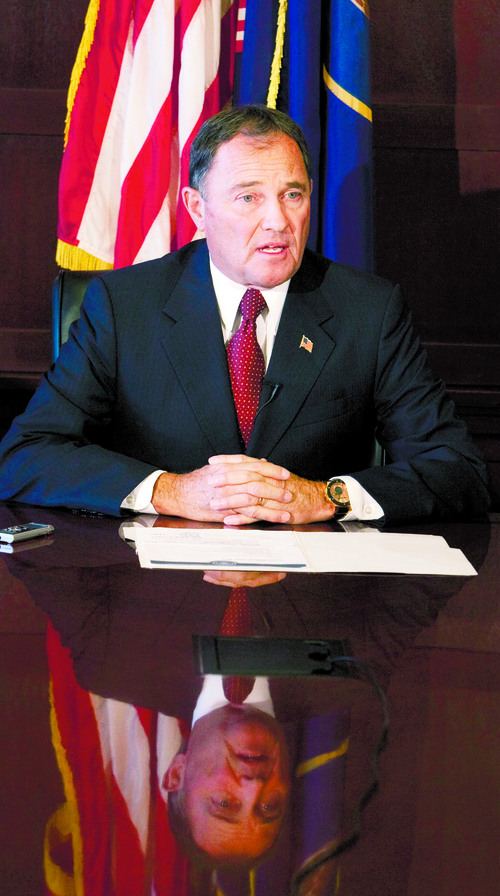This is an archived article that was published on sltrib.com in 2013, and information in the article may be outdated. It is provided only for personal research purposes and may not be reprinted.
Utah finished its budget year with a nearly quarter-billion-dollar surplus in the state fund that pays for public schools and universities, revenue figures released Tuesday show.
"This surplus is not only encouraging, it's needed," Gov. Gary Herbert said in a statement. "We can now augment the critical investment we make in education and economic development."
Constitutionally, Utah's income taxes go to pay for education in the state. The huge $242 million jump in the education fund was due to "profit-taking," or investors selling off stocks to avoid increased tax rates with the expiration of the Bush tax cuts.
Legislative Fiscal Analyst Jonathan Ball said that because the profits were taken in the 2012 tax year, they can't be counted on for the future, meaning the state revenue can really be spent only on one-time needs, not ongoing expenses like salaries.
Under state law, nearly half the money in the Education Fund is required to be diverted to the state's Rainy Day Funds. That leaves $122 million that lawmakers will be able to invest in one-time education purchases.
"We're hopeful that a good part of that is going to make its way to public education, obviously. I think there's a lot of things they could do with that," said Kory Holdaway, director of government relations for the Utah Education Association.
Holdaway said schools are being required to implement teacher-evaluation programs, computer adaptive testing and common core requirements without any money being made available for teacher training.
"Those are three big projects that they're expecting educators to bring online with no professional development funding having been provided in recent years," Holdaway said.
Senate Budget Chairman Lyle Hillyard, R-Logan, said legislators have already approved planning money for higher education buildings for Weber State in Ogden and Utah State University buildings in Brigham City and Price. And Cedar City has an applied technology center that is in need of repair.
In public education, he said there are innovative computer programs that can be bought and critical building needs on top of what lawmakers funded last year.
"I suspect that, given time and ingenuity, public education and higher education can come forward with lots of ways to spend the money," he said.
The infusion of $119 million in the Rainy Day Funds brings the total money set aside in what is essentially the state savings account to nearly $400 million — just $35 million shy of when the fund was at its peak before lawmakers drained half of it to try to deal with the economic meltdown.
The General Fund, which essentially pays for everything in state government besides education, came in slightly lower than expected and finished the year $300,000 in the red. But in a $13 billion budget, lawmakers did not see that as a cause for concern.
Twitter: @RobertGehrke



